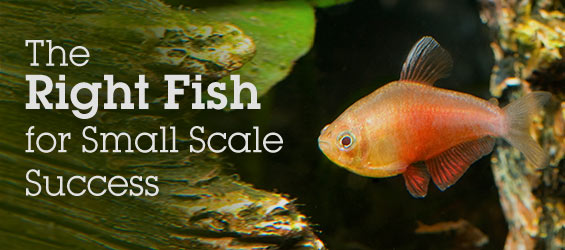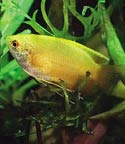
Smaller aquariums in the range of 10-20 gallons are the ideal size for the serious beginner. In addition to being economical, they are compact enough not to take up too much space in your home or office, but large enough to provide the perfect habitat for some of the most intriguing and beautiful miniature species.
When stocking your small aquarium, think scale: a community of tiny, active, and colorful tropical fish can make even the smallest setup appear grand.
Stock for balance and visual interest
Selecting your small community is a matter of compatibility, behavior, and beauty. Choose peaceful species, keeping in mind each may prefer a different diet, swimming area, and activity level. Use this diversity to create a balanced, healthy community that's both interesting to observe and easy to care for.
Schooling Fish
The majority of your community should consist of schooling fish of the same species. Schools create repetition of pattern and color, harmony of movement, and the illusion of several fish acting as one mind. The effect is both calming and dramatic. Ideal schooling fish include
Rasboras,
Danios,
White Cloud minnows, and smaller varieties of
Tetras.
 Showcase Fish
Showcase Fish
In contrast to a unified backdrop of schooling fish, choose one or two fish that stand out in both appearance and behavior. These fish become the "stars" of your community.
Dwarf or
Pygmy Gouramis make interesting choices for small aquariums, though extra care must be taken to keep pristine water conditions.
Algae & Detritus Eating Catfish
Put some fish in your community to work on cleanup duty. While many algae-eating
Plecos grow far too large for small aquariums, the Dwarf
Otocinclus Catfish is sized just right. This hardy worker seems endlessly busy, seeking out any plant or structure with a hint of algae. Another small catfish, the
Cory Cat, patrols the bottom of your aquarium, vacuuming up excess fish food and plant leaves before they can rot and turn into dangerous ammonia and nitrite.
Remember to research the specific requirements for each fish you choose, including water conditions, habitat, compatibility, and diet. Frequent, partial water changes and regular testing are especially important in compact ecosystems.
By thinking small, you'll be amazed how a carefully-selected community of tiny fish can create big drama in your new aquarium.
|




